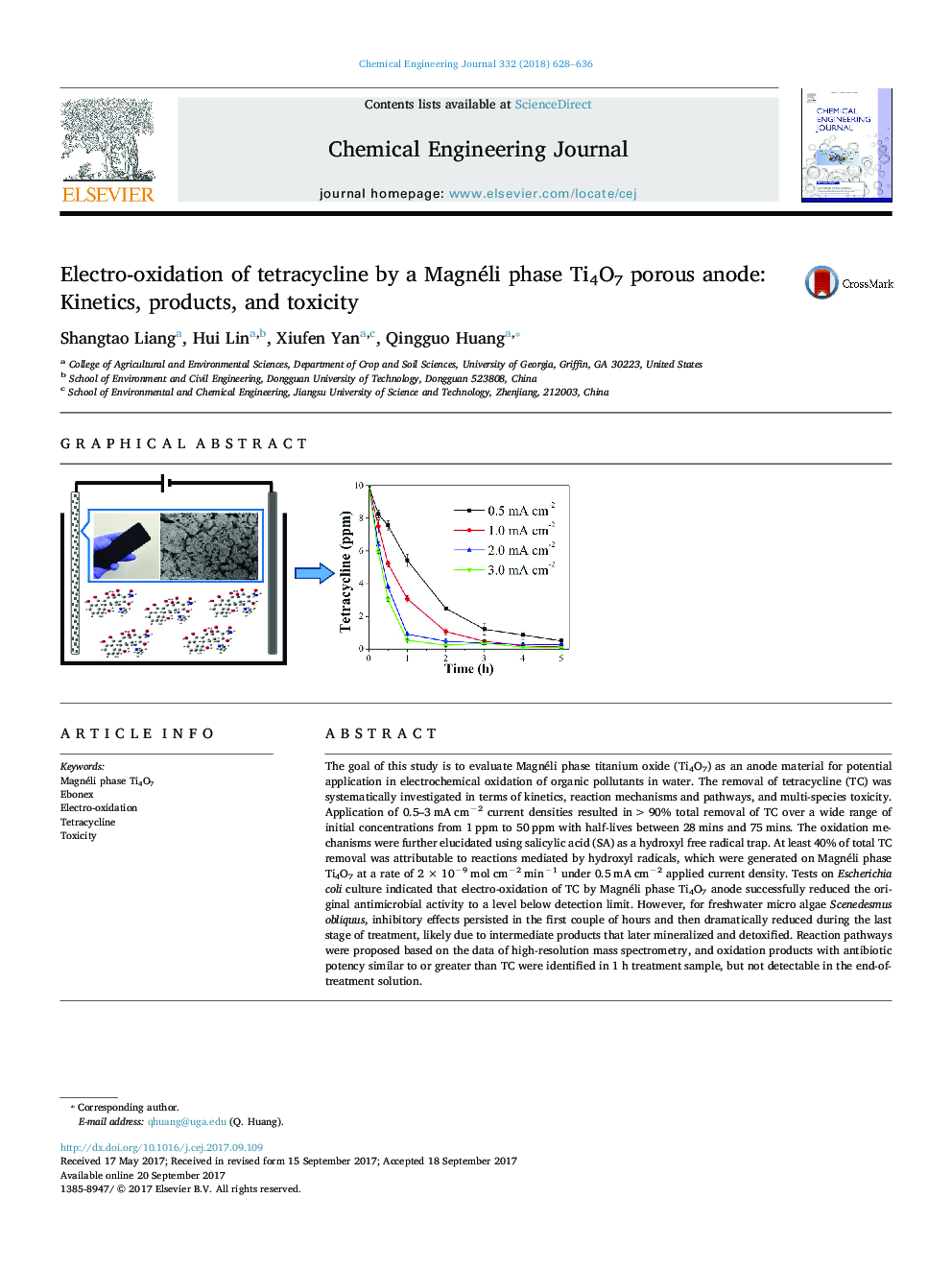| Article ID | Journal | Published Year | Pages | File Type |
|---|---|---|---|---|
| 6464924 | Chemical Engineering Journal | 2018 | 9 Pages |
â¢Achieved >95% removal of tetracycline in a porous Magnéli phase Ti4O7 anode.â¢Hydroxyl radical was generated at a rate of 2 Ã 10â9 mol cmâ2 minâ1.â¢Radical trapping method should be used with restrictions to quantify free radicals.â¢Reaction pathways were proposed using the data of high resolution mass spectrometry.â¢Toxicity increased at the beginning but reduced during the last stage of treatment.
The goal of this study is to evaluate Magnéli phase titanium oxide (Ti4O7) as an anode material for potential application in electrochemical oxidation of organic pollutants in water. The removal of tetracycline (TC) was systematically investigated in terms of kinetics, reaction mechanisms and pathways, and multi-species toxicity. Application of 0.5-3 mA cmâ2 current densities resulted in >90% total removal of TC over a wide range of initial concentrations from 1 ppm to 50 ppm with half-lives between 28 mins and 75 mins. The oxidation mechanisms were further elucidated using salicylic acid (SA) as a hydroxyl free radical trap. At least 40% of total TC removal was attributable to reactions mediated by hydroxyl radicals, which were generated on Magnéli phase Ti4O7 at a rate of 2 Ã 10â9 mol cmâ2 minâ1 under 0.5 mA cmâ2 applied current density. Tests on Escherichia coli culture indicated that electro-oxidation of TC by Magnéli phase Ti4O7 anode successfully reduced the original antimicrobial activity to a level below detection limit. However, for freshwater micro algae Scenedesmus obliquus, inhibitory effects persisted in the first couple of hours and then dramatically reduced during the last stage of treatment, likely due to intermediate products that later mineralized and detoxified. Reaction pathways were proposed based on the data of high-resolution mass spectrometry, and oxidation products with antibiotic potency similar to or greater than TC were identified in 1 h treatment sample, but not detectable in the end-of-treatment solution.
Graphical abstractDownload high-res image (204KB)Download full-size image
